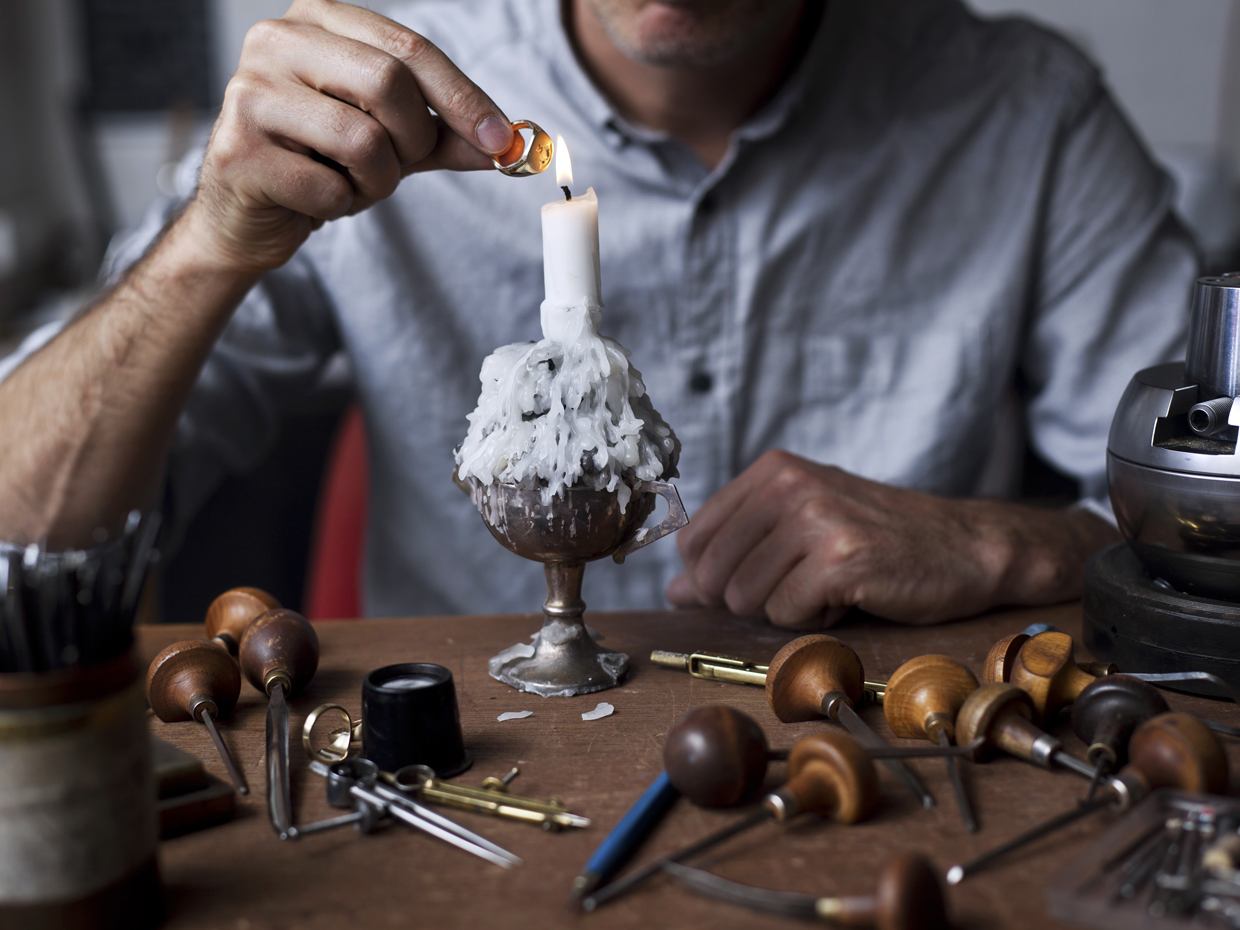Engraving Tools
Our team of craftsmen use an array of very small chisels, known as gravers, it is these that pare away the metal to produce the desired symbol or effect. They are handmade and sharpened to produce different cuts and textures. It takes an enormous amount of experience just to make these tools, that have remained unchanged for hundreds of years.
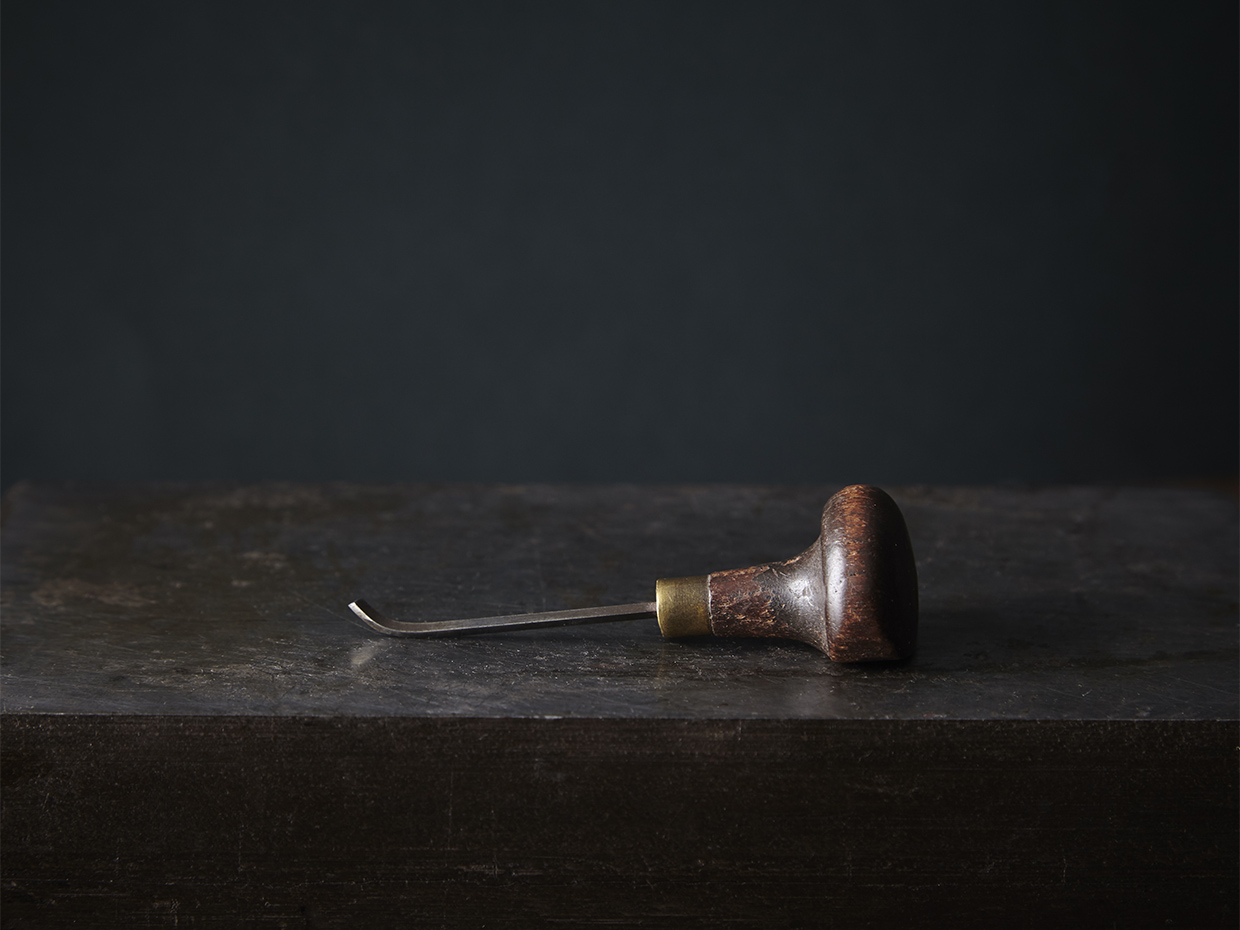
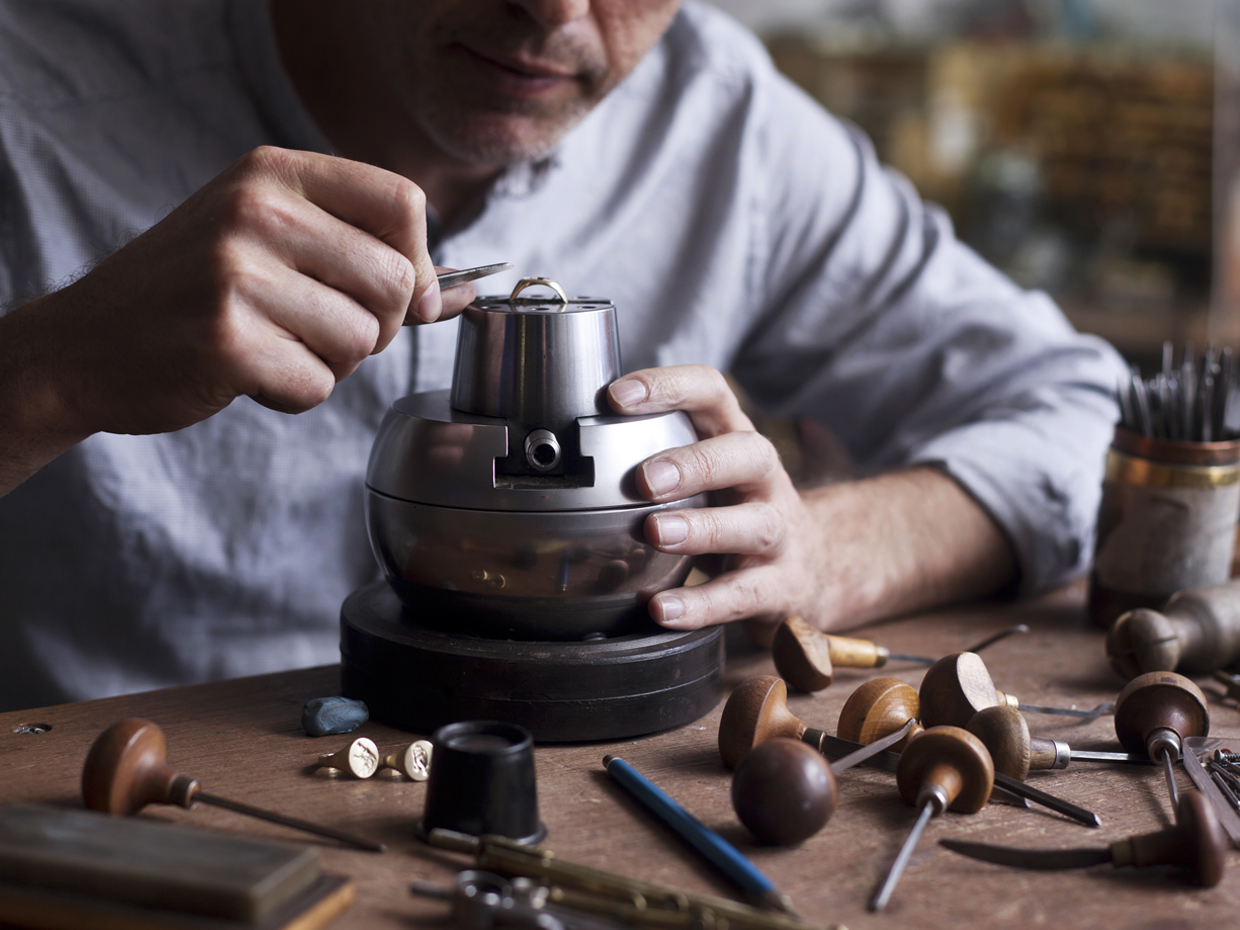
Hand Cut Seal Engraving
Seal engraving, otherwise known as ‘Intaglio’ is the craft of carving by hand your design into the precious metal or stone to effectively create miniature sculptures. Traditionally, the design is engraved in reverse into the ring, so that the wax impression taken from the seal engraving, shows an accurate 3D representation of your artwork. The Rebus craftsman must have the ability to think, draw and carve in reverse, in 3D. In miniature! It takes a great deal of ingenuity, where we often must make our own engraving tools for an individual job.
Hand Cut Surface Engraving
As with seal engraving, surface engraving is undertaken by hand, using handheld gravers that are pushed through the precious metal. It is the same technique used by the traditional (now gone) banknote engravers. Unlike seal engraving, we do not carve deeply into the metal, we engrave the design by cutting hundreds of lines in varying widths and depths until the design comes to life.
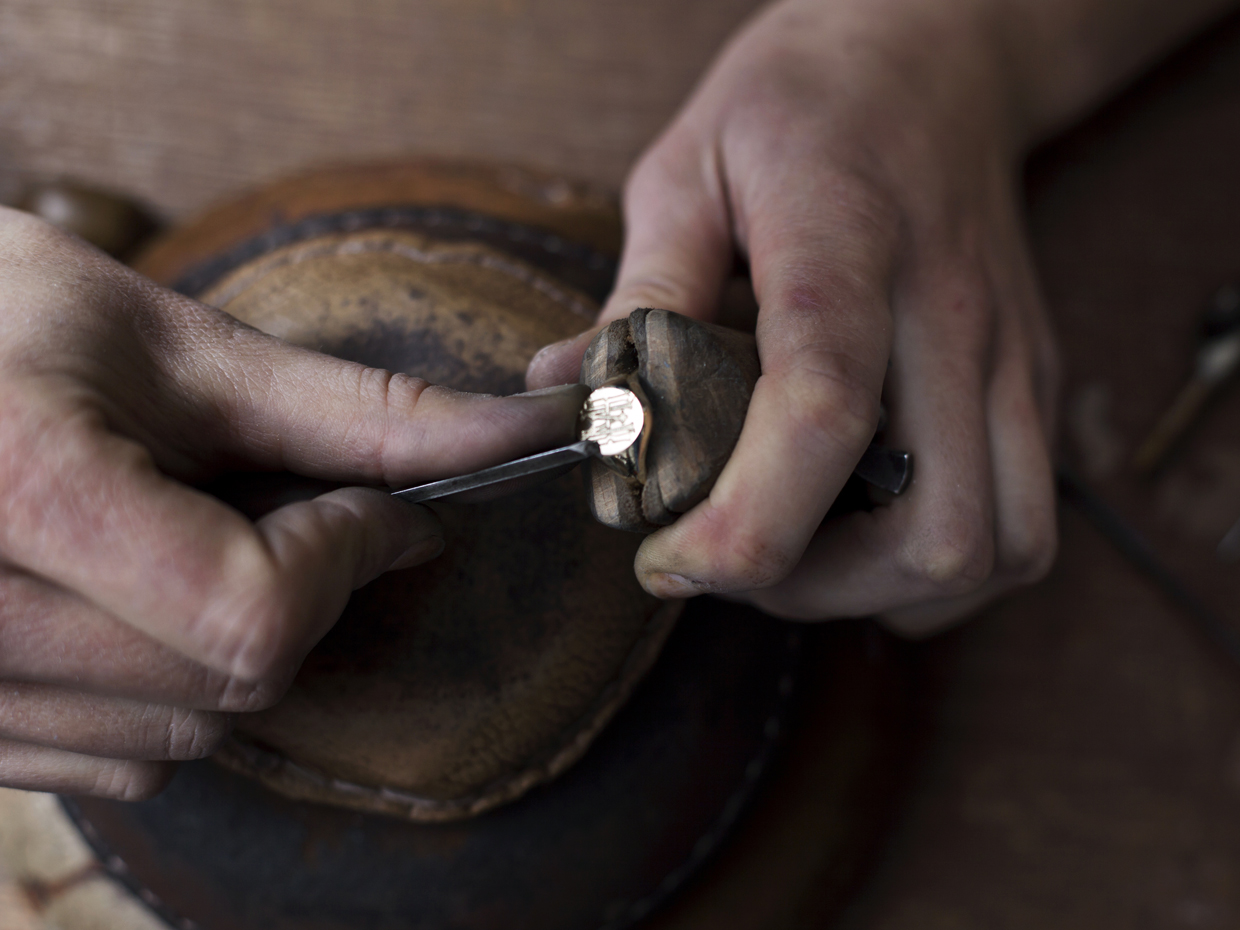
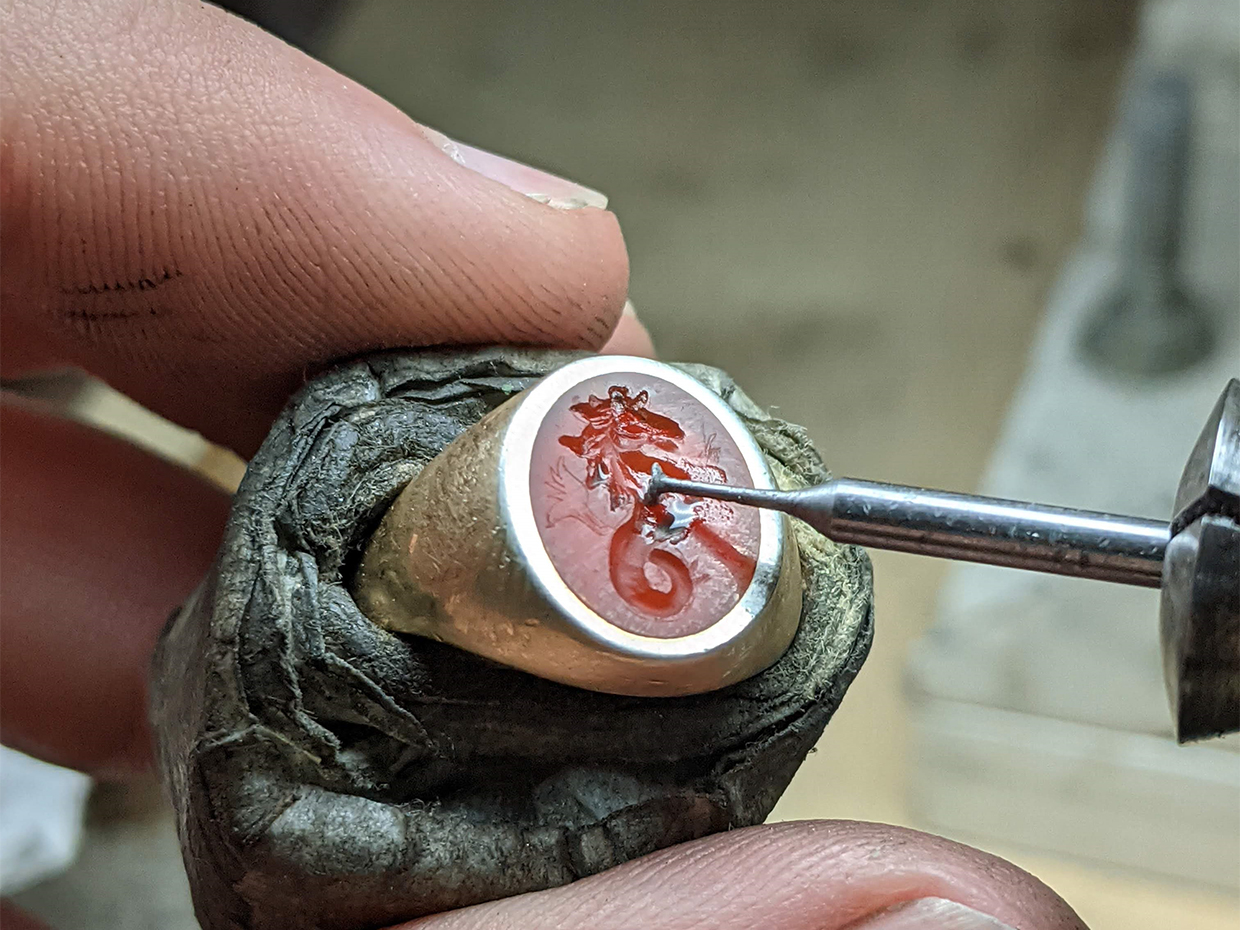
Stone Carving
Rebus stone set jewellery is carved by holding the item against very small rotating wheels, made of copper or hardened steel. Using different shaped wheels and abrasive diamond pastes, the stone is gradually carved away. As you can imagine, this is a very labour-intensive process and the stone can often break. There are only a very small handful of craftsmen left in the UK that retain the skills to do this work.
Wax Impressions
Having completed the seal engraving you are left with a beautiful item of jewellery that can be used as a tool to create a 3D wax impression of your seal engraved design. Your finished piece will be presented with a wax impression of your artwork as well as a stick of wax for you to take your own impressions. Traditionally it was this wax impression, aka ‘the seal’ that would be applied to documents as a means of authentication. Be sure to keep this safe in case you or future generations would like to have another Rebus engraved signet ring made.
